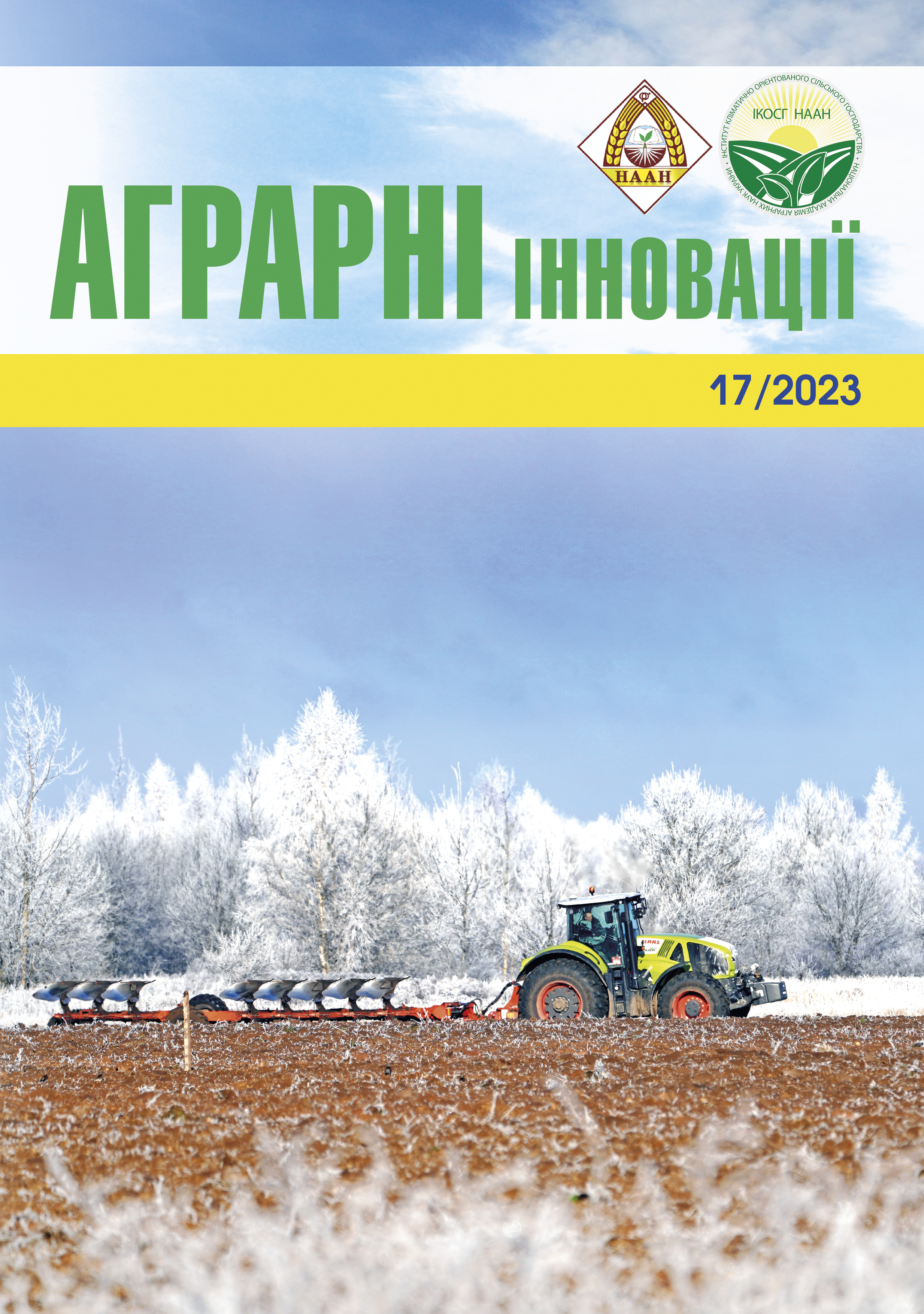CLONAL MICROPROPAGATION OF PAULOWNIA IN VITRO
Abstract
The purpose of the article – to develop technological methods of clonal micropropagation of paulownia in vitro. Methods. Paulownia plants Paulownia Sieb. et Zucc. were the material for the research. In the course of research, generally accepted methods in plant biotechnology were used. Aseptic work was performed in the laminar box KPG-1. Murashige and Skuga (MS) were used as the basic nutrient medium for the cultivation of isolated buds and micropods. The results. The method of clonal micropropagation based on the culture of isolated apical meristems provides a high reproduction rate, maximum genetic stability and recovery of the resulting regenerating plants. The most effective scheme of sterilization of paulownia is stepwise treatment of plant material with 70% ethanol solution and 1% sodium hypochlorite solution. The yield of sterile explants was 92.5–95.0%, viability – 90.0–97.5%. At the stage of introduction into in vitro culture, the optimal nutrient medium is MS, supplemented with kinetin 1.0 mg/l and GA 0.5 mg/l, at which the reproduction rate was the highest and was 8.7–9.2. At the stage of proper micropropagation, the most intensive proliferation of shoots also occurred on the nutrient medium MS, supplemented with kinetin 1.0 mg/l and GA 0.5 mg/l, which provided the highest reproduction rate – 10.3–12.0. At the stage of rooting of micro-shoots the most optimal was the nutrient medium 1/2 MS, supplemented with a IBА of 0.5 mg/l, at which the frequency of rhizogenesis was 95.0% and formed 5.3–7.8 roots with a length of 78.5–95.2 mm. Stepwise adaptation of plants to in vivo conditions for 40 days in climatic chambers and growing in a greenhouse ensured the yield of seedlings at the level of 85.0–95.0%. Conclusions. On the basis of the carried-out experimental researches methods of clonal micropropagation paulownia in vitro, which are expedient to use for mass production of genetically homogeneous healthy planting material.
References
2. Мацкевич О. В., Філіпова Л. М., Мацкевич В. В., Андрієвський В. В. Павловнія: науково-практичний посібник: Біла Церква: БНАУ, 2019. 80 с.
3. Манушкіна Т. М., Коломієць Н. П. Перспективи вирощування павловнії у зоні Південного Степу України як енергетичної та декоративної культури. Актуальні проблеми землеробської галузі та шляхи їх вирішення : матеріали Всеукраїнської науково-практичної конференції, 09–11 грудня 2020 р. Миколаїв : МНАУ, 2020. С. 44–46.
4. Теслюк Н. І., Аврамович І. Клональне мікророзмноження Павловнії повстяної (Paulownia tomentosa). Мікробіологія в сучасному сільськогосподарському виробництві : матеріали ХІІІ наук. конф. молодих вчених, присвяченої 100-річчю з дня заснування Нац. академії аграрних наук України (м. Чернігів, 24–25 жовтня 2018 р.). Національна академія аграрних наук України, Ін-т сільськогосподарської мікробіології та агропромислового виробництва. Чернігів : видавець Брагинець О. В., 2018. С.235.
5. Filipova L. M., Matskevych V. V. , Karpuk L. M., Stadnyk A. P., Andriievsky V. V., Vrublevsky A. T., Krupa N. M., Pavlichenko A. А.. Features of Rooting Paulownia in vitro Egypt. J. Chem. 2nd International Conference on Agricultural Biosystems (AGRIBIOS 2019). 2019. P. 57–63.
6. Подгаєцький А. А., Мацкевич В. В., Подгаєцький А. Ан. Особливості мікроклонального размноження видів рослин. Біла Церква, 2018. 208 с.
7. Мацкевич В. В., Подгаєцький А. А., Філіпова Л. М. Мікроклональне розмноження окремих видів рослин (протоколи технологій): науково-практичний посібник. Біла Церква: БНАУ, 2019. 85 с.
8. Мацкевич В. В. Мікроклональне розмноження видів рослин in vitro та їх постасептична адаптація. Автореферат дис. д-ра с.-г. наук… спец. 06.01.05 – селекція і насінництво. Суми. 2020. 56 с.
9. Мацкевич В. В. Особливості детермінації онтогенезу павловнії in vitro синтетичними гормонами. Науковий журнал «Вісник Сумського національного аграрного університету». Серія «Агрономія і біологія». 2018. Вип. 9(36). С. 76–82.
10. Філіпова Л. М., Мацкевич В. В., Мацкевич О. В. Ризогенез павловнії in vitro. Аграрна освіта та наука: досягнення, роль, фактори росту. Інноваційні технології в агрономії, агрохімії та екології. Землеустрій та кадастри у сучасних умовах : матеріали Міжнародної науково-практичної конференції. 2019. Біла Церква, БНАУ. С. 33–39.
11. Bergmann B. A., Moon H.-K. In vitro adventitious shoot production in Paulownia. Plant Cell Reports. 1997.Vol. 16. P. 315–319. https://doi.org/10.1007/ BF01088288.
12. Кушнір Г. П., Сарнацька В. В. Мікроклональне розмноження рослин. Теорія і практика. К.: Наук. думка, 2005. 270 с
13. Kyte L., Kleyn J., Scoggins H., Bridgen M. Plants from Test Tubes: An Introduction to Micropropogation Hardcover. August 13, 2013. 274 р
14. Murashige T., Skoog F. A revised medium for rapid growth and bio-assays with tobacco tissue cultures. Physiol Plant. 1962. Vol. 15(3). P. 473–497. https://doi.org/ 10.1111/j.1399-3054.1962.tb08052.x.
15. Єщенко В. О., Копитко П. Г., Костогриз П. В., Опришко В. П. Основи наукових досліджень в агрономії: підручник / за ред. В. О. Єщенко. Вінниця : ПП «ТД «Едельвейс і К» ». 2014. 332 с.






